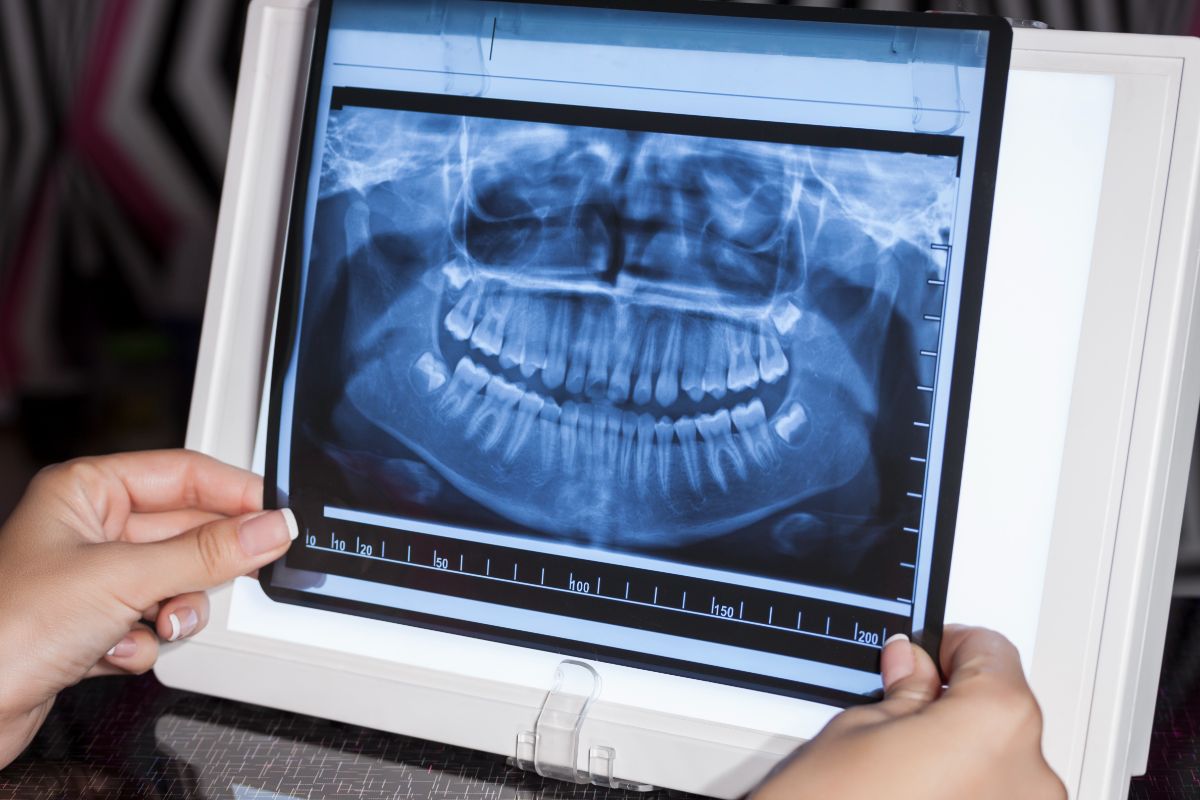3 Types Of Dental X-ray

3 Types Of Dental X-ray
What are the different types of dental x-ray?
- Panoramic X-ray
- Periapical X-ray
- Cephalometric X-ray
If you’ve had medical assessments before, you may already be familiar with an X-ray, which is a type of imaging test that shows the structures inside your body, especially your bones. This test is often used to examine many parts of the body — including your teeth. There are various types of dental X-rays, and each of them is used by your dentist to make an accurate diagnosis or plan an effective dental treatment.
Dental x-rays show your dentist the condition of your teeth, bone, and jaw. This test can help your doctor find problems that cannot be spotted with only an oral exam. X-rays can show if there is decay between teeth, changes in root canal due to infection, abscesses, impacted teeth, and many more. Keep on reading to learn more!
Panoramic X-ray
 A panoramic X-ray can show the condition of your entire mouth — including all the teeth on your upper and lower jaws. It gives your dentist a comprehensive view of your mouth in just a short amount of time.
A panoramic X-ray can show the condition of your entire mouth — including all the teeth on your upper and lower jaws. It gives your dentist a comprehensive view of your mouth in just a short amount of time.
This type of X-ray is used to detect your fully emerged and emerging teeth. It can be useful in seeing impacted teeth and lesions as well. It can be used to check on your wisdom teeth and look for jaw problems. Since a panoramic X-ray shows your entire mouth in one image, it won’t provide the detail needed to detect cavities.
Other than that, a panoramic X-ray is also useful for planning treatments such as implants, dentures, and braces.
How Is Panoramic X-Ray Done?
A panoramic X-ray is done extraorally, which means that the machine and film will be outside your mouth. The X-ray machine will send a beam through your mouth onto the film or a detector.
When getting a panoramic X-ray, you will be asked to bite on a “bite blocker”. This will disocclude your teeth during the radiograph, so the doctor can get a clear image of your teeth. The machine will make a semi-circle around your head to get the image.
Periapical X-ray
If your dentist only needs to see one or two teeth at a time, they will require a periapical dental X-ray. The name comes from the Greek word “peri” which means around and the word “apex” which means tip. This type of x-ray will show the whole tooth all the way from the crown to beyond the root where your tooth is attached to the jaw or the apex area.
This type of dental X-ray is often required if your dentist wants to investigate problems related to the tip of the tooth root or with the jawbone. The X-ray can help detect changes in the root and also the surrounding bone.
This type of X-ray is commonly used to see the depth of the decay of your tooth, and if ever it needs root canal therapy. It may also be required to diagnose impacted teeth, cysts, and more.
How Is Periapical X-ray Done?
A periapical X-ray is done intraorally, which means that the film is placed inside the mouth. To take a periapical X-ray, a film is placed on a tooth that needs diagnosis and the machine is placed perpendicular to the film.
Cephalometric X-ray
 A cephalometric X-ray takes an image of one side of the entire head, showing a view of your teeth, jaw, and surrounding structures.
A cephalometric X-ray takes an image of one side of the entire head, showing a view of your teeth, jaw, and surrounding structures.
This is usually done so that orthodontists can see the relationship between your teeth, facial profile and jaws. This can help your dentist develop a specific approach to teeth realignment.
Cephalometric X-rays are used by dentists to assess if you have impacted teeth, temporomandibular joint (TMJ) problems, broken teeth and jaws, cancers, and also airway problems.
How Is Cephalometric X-ray Done?
A cephalometric x-ray is done extraorally, which means that it’s taken outside your mouth. It won’t require you to bite down on any equipment as well. A film holder mounted on a mechanical arm will capture images of your jaw, mouth, and head. The exposure will only take a few seconds, and the X-ray will be developed in a few minutes.
Key Takeaway
X-rays are often used when diagnosing certain dental conditions when oral exams are not enough. This way, you can get the best treatment to elevate your smile. There are different types of dental X-rays that you might need to undergo — whether your dentist needs to look at a specific tooth or have an overall view of your teeth and jaws.
If you’re interested in getting your teeth checked, don’t hesitate to contact us here at Elevate Dental! To provide you with an accurate diagnosis and plan for more effective treatments, we will require dental X-rays when they’re needed. We have dentists that specialize in different fields — such as general dentistry, orthodontics, oral surgery, pediatric dentistry, cosmetic dentistry, and many more.












